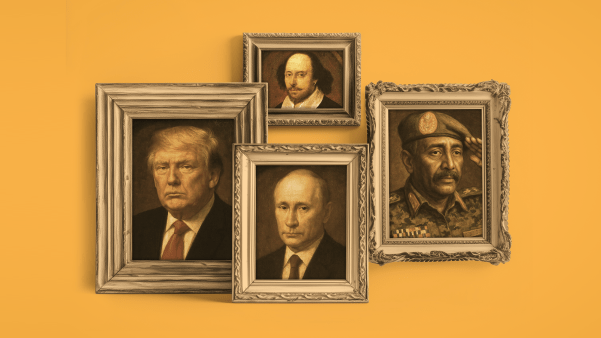It is A.D. 240 in Dura Europos, a Roman garrison on the Euphrates River. If you walk the streets at the western edge of town, you pass:
- A temple of Mithras,
- A temple of Palmyrene gods,
- A Jewish synagogue,
- A temple of Adonis,
- A sanctuary of Tyche,
- A Christian house church,
- A shrine to Zeus Kyrios.
Elsewhere in the city you would find temples to Gadde (a local Palmyrene deity), Zeus Theos, Zeus Megistos, Atargatis (a Syrian goddess), Artemis, and Jupiter Dolichenus (a Syrian Baal), as well as the military temple next to the garrison’s headquarters.
To put it another way, Christianity did not enter a religious vacuum. Such religious pluralism typified all ancient cities. People were not sitting around waiting for a new religion to burst on the scene. Dozens, if not hundreds, of religions were available.
Judaism was the competitor with the greatest similarity to Christianity. The Jews’ Yahweh and literally hundreds of deities vied for attention, but people tended to channel their religious and moral aspirations in one of three directions.
Mithraism: From raven to father
Although its deity had a Persian name, Mithraism was a creation of Greeks and Romans. Mithraism’s god wielded power over the movements of the heavenly bodies. It combined elements of astrology and the Greek mystery religions, which highlighted special rites of initiation. There were seven grades of this initiation—Raven, Bride, Soldier, Lion, Persian, Heliodromus, and Father (the usual title of the head of a community). Neophytes passed through tests of endurance and took an oath before admission to each level.
Like Christianity and many pagan cults, a communal meal was a central feature of Mithraic meetings. It also shared with Christianity (as distinct from most mystery cults) moral demands (especially loyalty to oaths), a lack of national ties, no professional priestly caste, no public drama, and a deity who had a “life story” of significant events. However, unlike Christianity, Mithraism’s divine story was related to astronomical phenomena, not historical events.
Furthermore, it was nonexclusive, permitting its members to worship other deities. Also unlike Christianity, and indeed other cults, Mithraism barred all women from membership. Consequently, it remained a religion of the few, in spite of receiving patronage from high officials and some emperors.
The remains at Dura help us glimpse the growth of Mithraism at this military outpost. The first sanctuary was merely one room in a private house (c. 168-171). In the early third century, the house was extensively remodeled to give the appearance of typical Mithraea: an elongated hall (in imitation of a cave), an altar and shrine depicting Mithras slaying a bull (the cult emblem) at one end, raised benches against both side walls flanking a central aisle, and a vestibule. The third stage (after 240) increased the seating capacity and showed more artistic elaboration: in one niche, a canopy of stars framed the bull slaying.
Emperor cult: Eagle ascending
The emperor held so much power that the only beings with whom comparison could be made were gods, and the only adequate homage seemed to be the honors given to deities. The power of emperors, although it seemed almost supernatural, did not mean people expected them to act supernaturally; nor were prayers and votive offerings given to them.
Nevertheless, in gratitude for favors bestowed or in anticipation of future blessings, honors equal to those given to the gods seemed appropriate: so people dedicated temples to them, set up their statues with the attributes of deities, offered sacrifices in their honor, and ascribed divine titles to them. For such practices, the imperial cult was born.
Typically, the new ruler directed the Senate to deify (apotheosis) his predecessor, although some emperors (Caligula, Nero, Domitian, and Commodus) demanded divine honors in their lifetime. In art an eagle ascending to the sky (carrying the soul of the deceased emperor) often symbolized deification. A relief from Ephesus depicts Trajan rising to heaven in the chariot of the sun.
Often cities anticipated official policy and instituted divine honors for the living emperor. Cities in Asia Minor promoted the imperial cult aggressively because the empire brought them great prosperity.
Ephesus provides a good illustration: it declared Julius Caesar a manifest god and set up a shrine to Augustus within the great temple area dedicated to Artemis. Worship was also given to Nero in connection with Artemis, and a temple to the Flavian emperors was dedicated under Domitian. A new temple to Hadrian as Zeus Olympius was also built, and a festival (Hadrianeia Olympia) was instituted.
A plethora of paganism
In the end, the strongest rival of Christianity proved to be traditional paganism, with its multiplicity of divine powers, rituals of sacrifice, temples, statues of deities, votive offerings, and periodic festivals. There is no neat way to sum up the variety, yet perhaps a few quotations from ancient sources can give a flavor of the devotion and superstition that held hope for so many (see “From Black Magic to Mystical Awe,” p. 36).
Philosophy served for many people in the ancient world the functions we expect of a religion—providing a moral code and giving spiritual guidance. In the late third and fourth centuries, under such thinkers as Porphyry, Iamblichus, and Sallustius, Neoplatonism allied itself with traditional paganism. The last creative form of Greek philosophy, it defended sacrifices, magic, and astrology as part of its own spiritual vision of reality.
Traditional religions, then, were deeply entrenched in the ancient world, and in a variety of forms. It is no wonder that historians continue to probe this era to discover how exactly Christianity eventually uprooted them.
Everett Ferguson is professor of history at Abilene State University and editor of the Encyclopedia of Early Christianity (2nd edition: Garland, 1997).
Copyright © 1998 by the author or Christianity Today/Christian History magazine.Click here for reprint information on Christian History.








